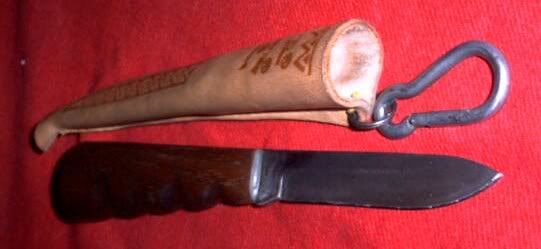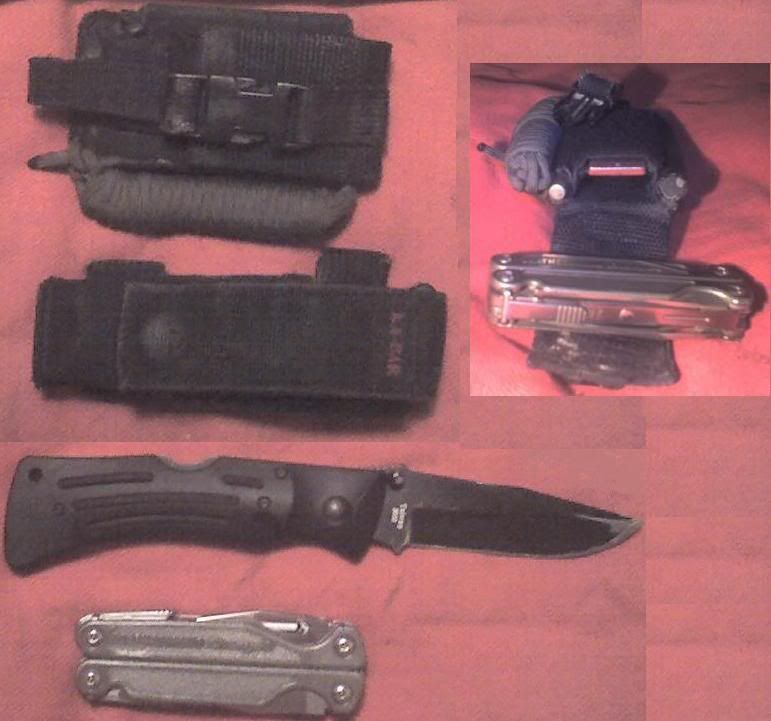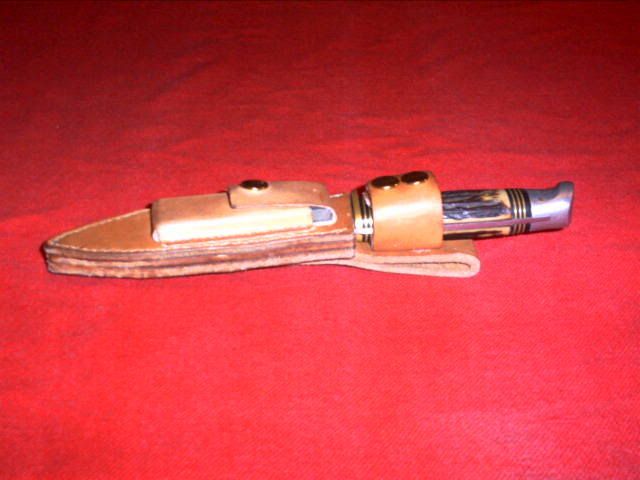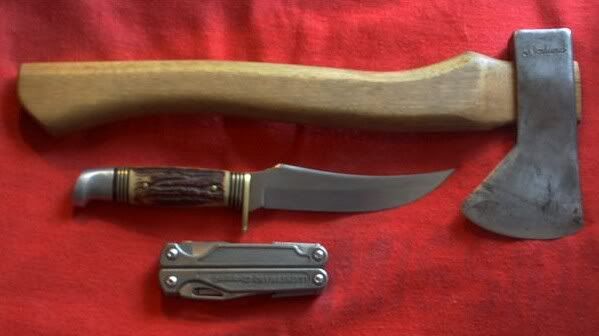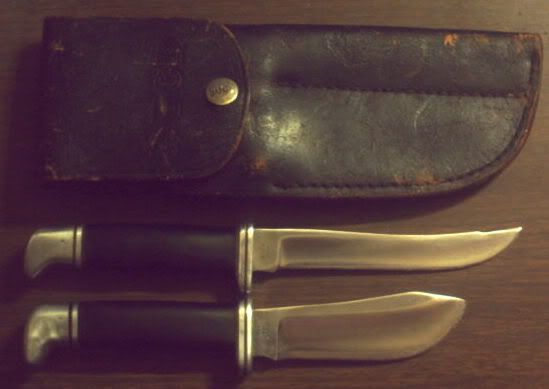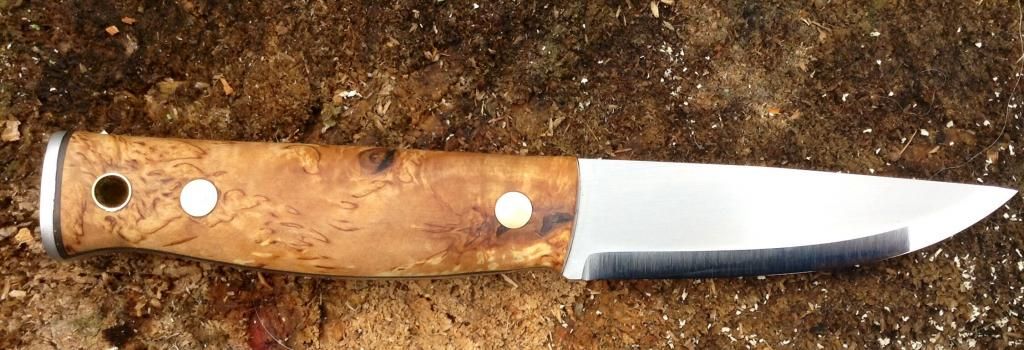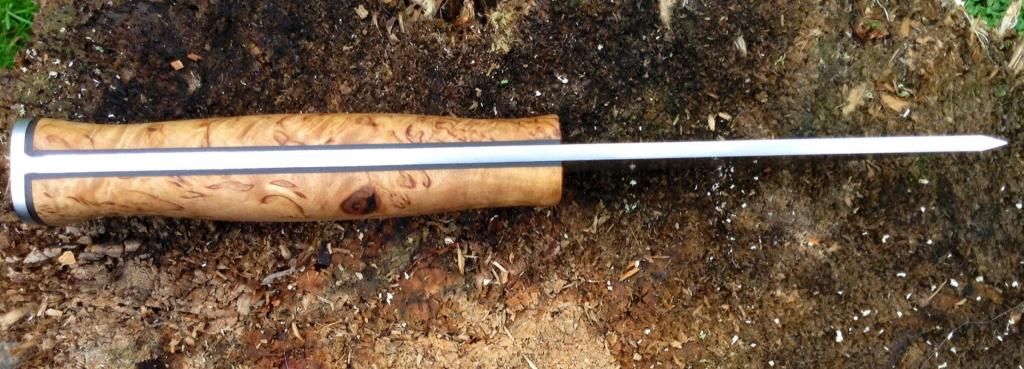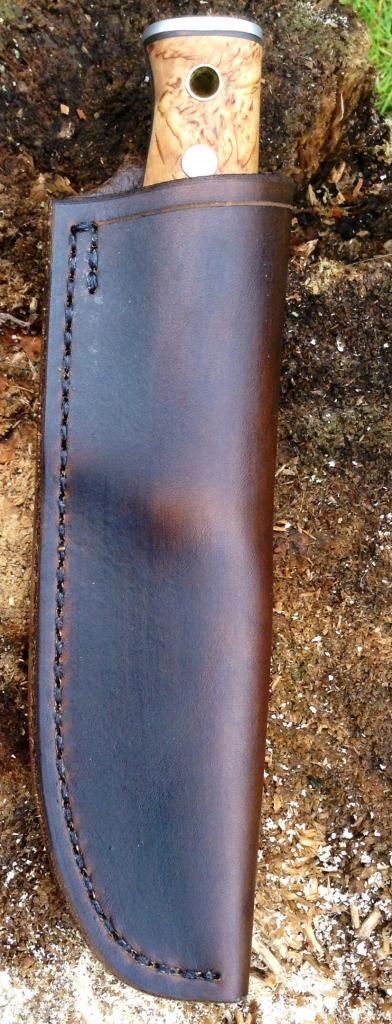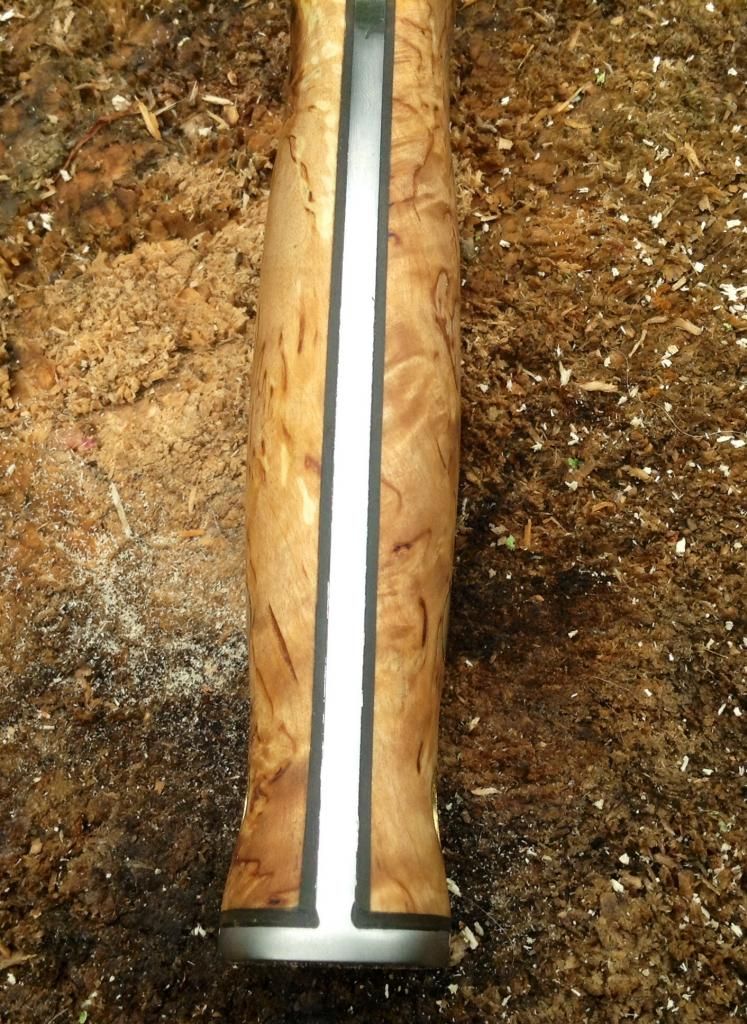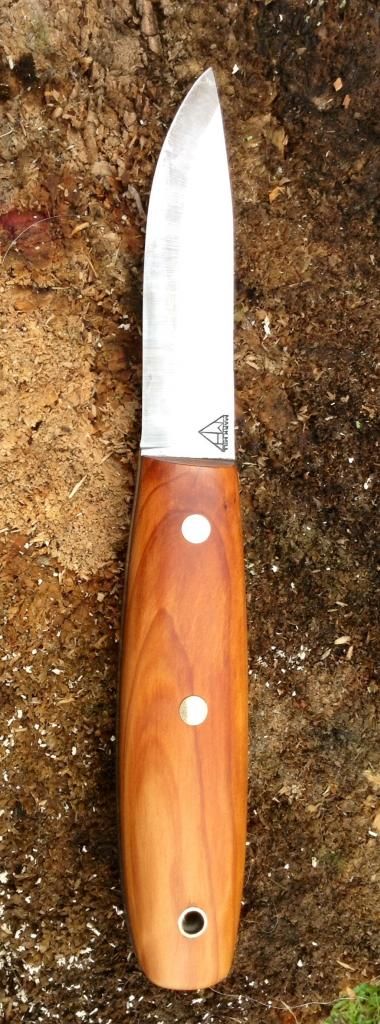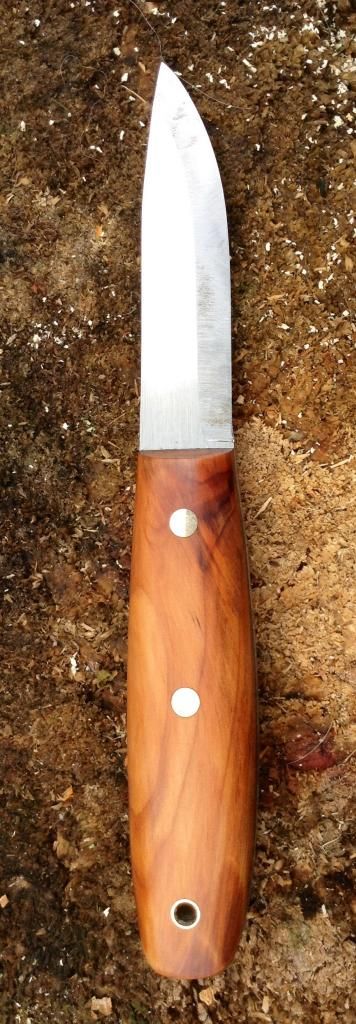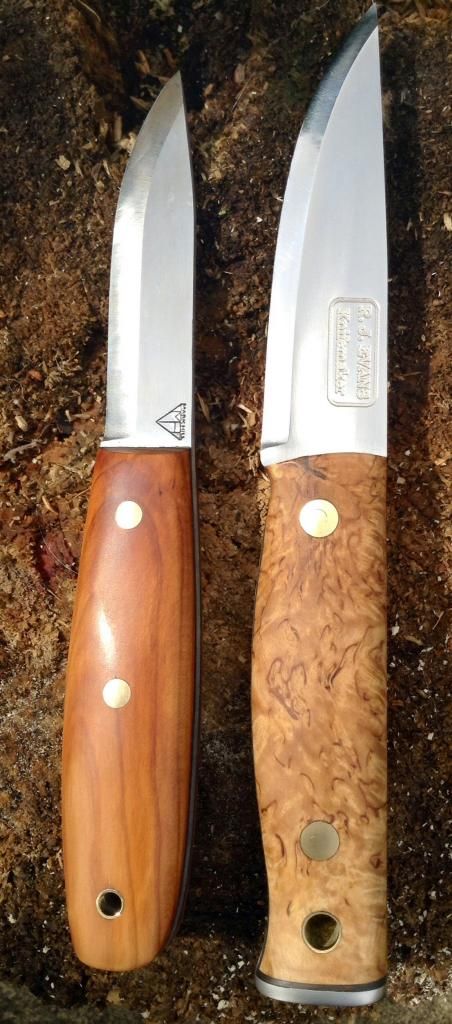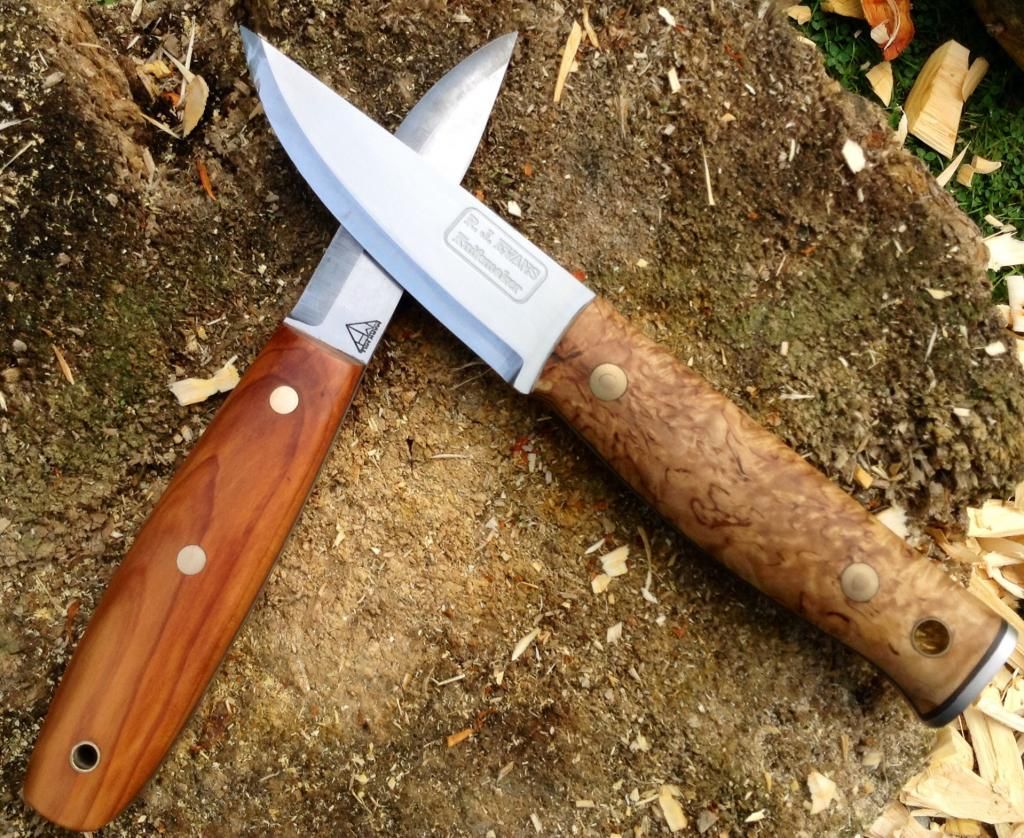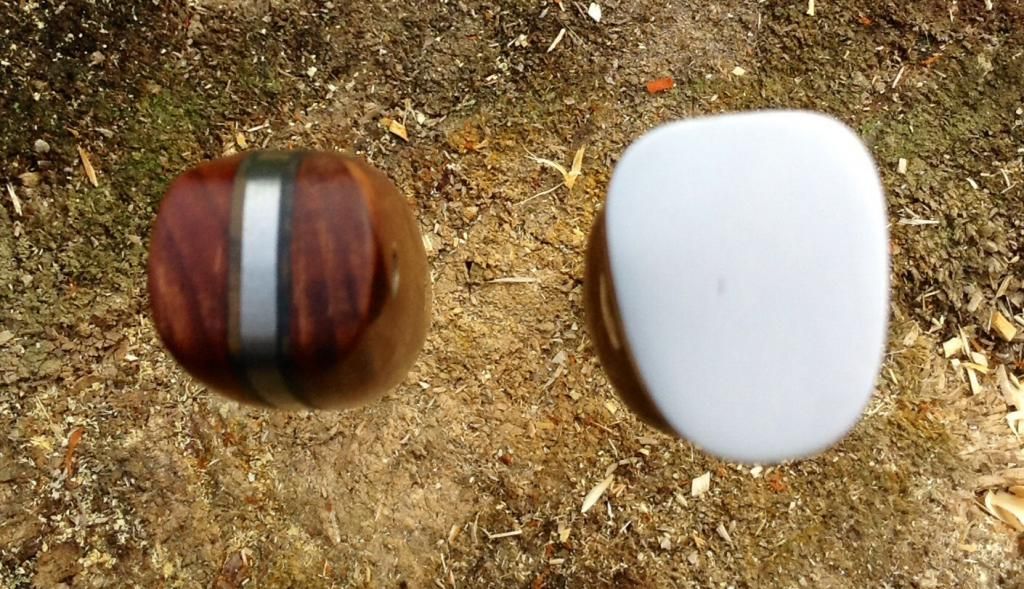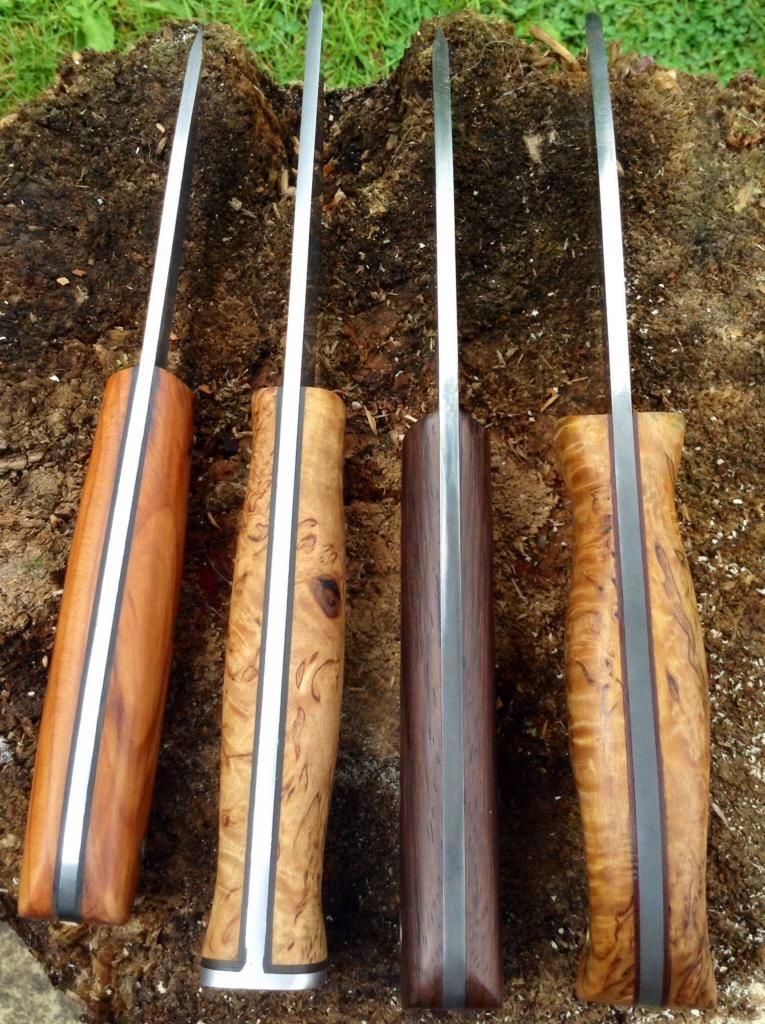My puukko knife is probably my most widely used fixed bladed knife for use in the bush. Nowadays it's one of the few carbon steel knives I'll carry around due to the humidity and proximity to salt water.
puukko knife
This is a puukko knife with a 3-3/4" blade I made from an old, beat up Western L66 blade made of 0170-6 chrome-vanadium carbon steel and an old hickory hammer handle. The photo was taken when the sheath was new. The sheath I scavenged off of a Rapala 4" filet knife and impregnated it with multiple doses of Kiwi boot waterproofing spray to prevent water absorption and rot. Reshaped the original blade into a Kephart pattern. This knife is great for many tasks, including gutting a deer.
This is one of my most commonly use field knives. It can be worn as a neck knife, it can clip to a coat in the winter, and it can clip to a pair of shorts in the summer.
That Schrade Sharpfinger mentioned in the previous post is a good knife design. I have an old Sharpfinger with an original carbon steel blade. It's currently in my leatherworking box since I'm in the process of making a new sheath for it after the old, original one fell apart. It is a very useful knife.
The 'one knife'? That can vary a lot. In this part of the world, one of your most useful tools for bushcraft is an 18" machete. When I'm out around or in salt water, such as out on a kayak, I wear a neck lanyard with a folding, lockback, serrated mariner's knife with a 440C stainless blade. In my kayak's emergency kit I keep a Victorinox Swiss Champ.
If I had to grab 'one' knife for survival it would be my Leatherman Charge.
If I had to grab only two blades for survival or long term bushcraft, it would be my Leatherman and my Norlund hatchet. I like the 'Hudson Bay' style hatchet head with a 3" bit as it makes a great ulu and it alone can be used as a knife. I reprofiled the bit to a convex edge. Just to demonstrate how good of a knife it could be, I peeled and sliced potatoes with it before. It's been used for dressing out and skinning deer. It can also do things well most knives cannot to. It can take a razor edge, but it can also suffer abuse that would wreck most knives.
After that it would be my puukko knife and one of my fixed blade Western knives, either my SH39 or my W66. The different blade shapes of the puukko and the fixed bladed knives I find compliment each other.
Sometimes when I travel and I want to bring a 'bushcraft' knife, I will bring my Kabar Mule folding knife in addition to my Leatherman instead of a fixed blade knife. This is for social and sometimes legal reasons. I've batoned wood with the Mule's 3-3/4" blade. The blade on the Mule is AUS-8A and it holds a very good edge for a decent length of time. It's a tough knife for a folder.
Leatherman Charge and Kabar Mule
The Kabar Mule comes with a surprisingly useful sheath. For a carry pouch on my Leatherman I made my own. It has an internal pocket for a DMT fine grit diamond hone, a side pocket for an EZE-Lap tapered diamond rod for sharpening the serrated blade, and a side pocket for holding a magnesium fire tool. There are a couple of web strap loops along the side to securely attach a bundle of 550 paracord for emergencies. The Leatherm pouch is held shut with both velcro and a fastex buckle, while the Kabar pouch is held shut with velcro and a heavy duty snap.
Western SH39
This is an old knife made in the 70's that I made a new sheath for a while back (photo is several years old when the sheath was new). The old Western knives were great, but the sheaths weren't. This knife I have used a lot as a field knife for bushcraft and hunting.
The 5" blade is 440C stainless with a good temper (Rc less than the old Buck 440C knives) and it holds an edge well. The Western '39' pattern blade came in both 440C and 0170-6 chrome-vanadium carbon steel. The blade feels good in your hand is is great for a variety of tasks, including butchering game.
The hone pocket on the sheath holds a 3" EZE-Lap diamond hone. I live in a very humid climate near a lot of fresh water rivers and salt water bays, so the stainless blade does have it's advantages.
Nessmuk Combo
This is my current 'Nessmuk Combo'. The classic Nesmuk combo is a fixed blade knife, a hatchet, and a folding utility knife. I'm also usually packing the puukko with this setup.
The knife is my Western SH39 with a 5" 440C stainless blade. The hatchet is an old Norlund hatchet head I rehafted several years ago, and then let it sun cure in linseed oil. The folding knife is a Leatherman Charge.
Western W66
The '66' blade pattern is a very common blade style of the old Westen knives that came with a variety of handle and tang styles. This one has rosewood handles. The 4-3/8" blade is 0170-6 chrome-vanadium carbon steel (what Cold Steel later marketed as 'Carbon V'). This is one of my favorite knives and it's currently in my leatherworking box being fitted for a new leather sheath. I made a great sheath for it out of PVC pipe, but PVC isn't kydex and I don't trust it for extreme use.
The blade shape on this is another old Kephart pattern and is extremely versatile. The steel and temper takes a razor edge easily and holds it.
Buck 104 set
This is a rather old Buck 104 knife set, back when Buck made their blades out of 440C and had a hardness of around Rc60 or so. The long, more slender 5" blade is a Buck 105, and the shorter, wider blade is a Buck 103 Skinner. These old, extremely hard Buck blades can be tough to sharpen, but they can hold their edge for a long time. You can dress out and butcher an elk with these two knives and not have to resharpen them during the process. I keep these sharp with a DMT fine grit diamond hone and a length of leather strap I impregnated with 1200 grit polishing rouge.
This knife set lives in my emergency INCH gear (INCH - I'm Never Coming Home Again). These aren't knives I directly carry on me on a regular basis. When I have the extra room and weight, this set goes with me in my pack on hunts or any other activity where I might have to dress out and possibly butcher a large game animal.
Because I'm around so much water, a very much used knife around here is a Rapala filet knife. Stashed about home, in the Jeep, and about my gear I have 2 six inch, a seven inch, and a four inch Rapala. The seven inch is a tad large, I usually use the 6" most often. However, some of the salt water fish here can get a kind of big.

